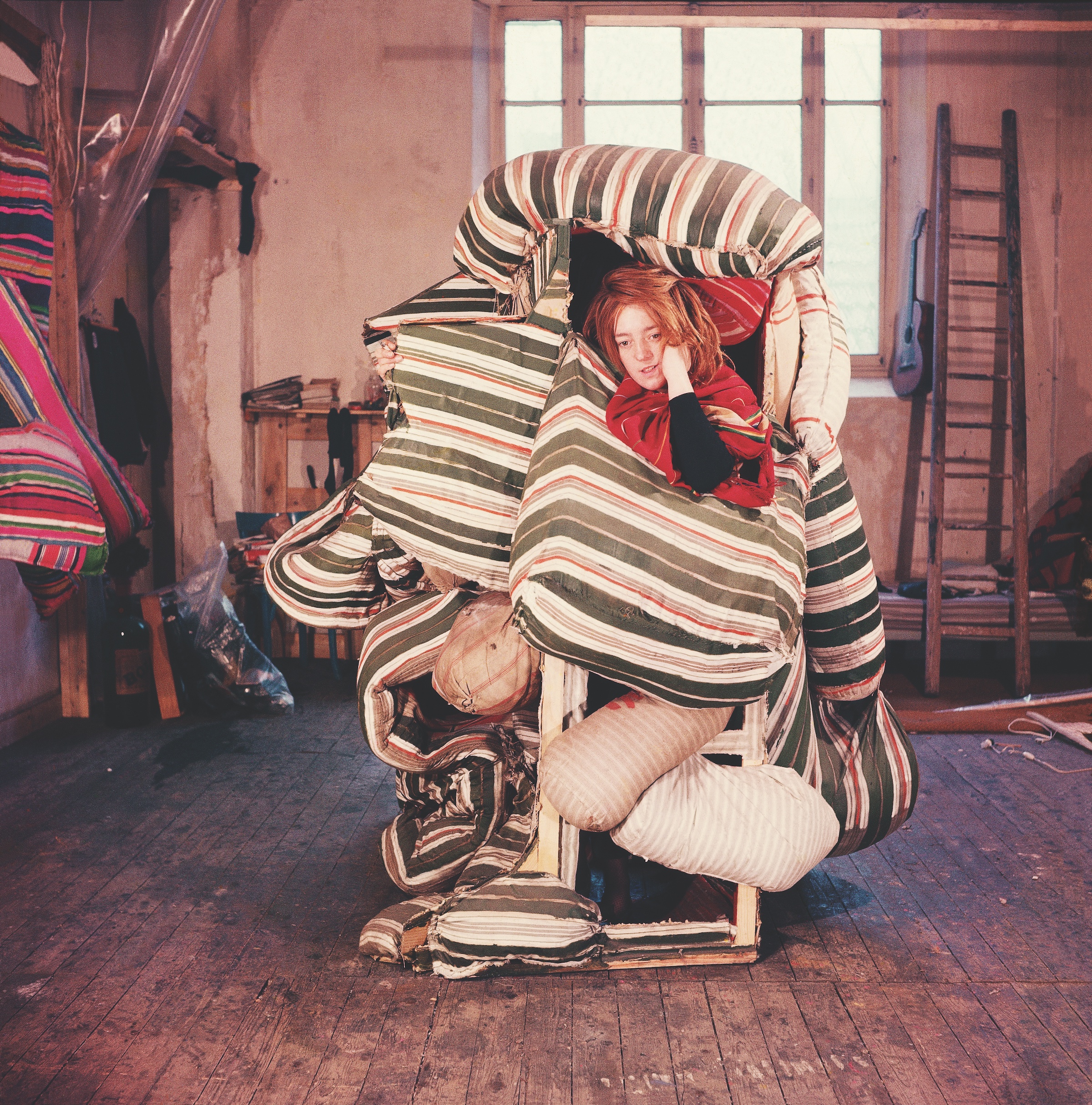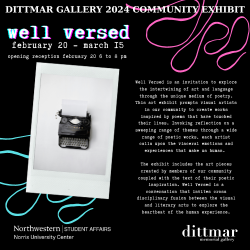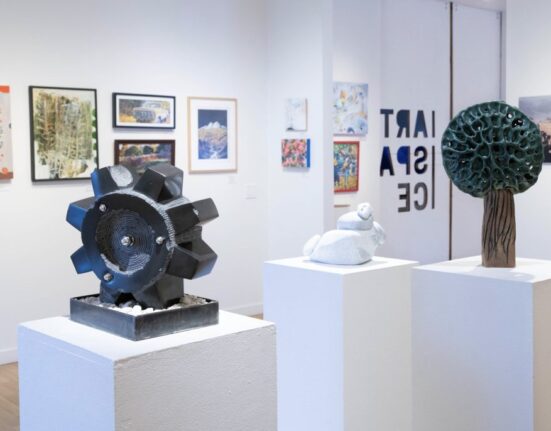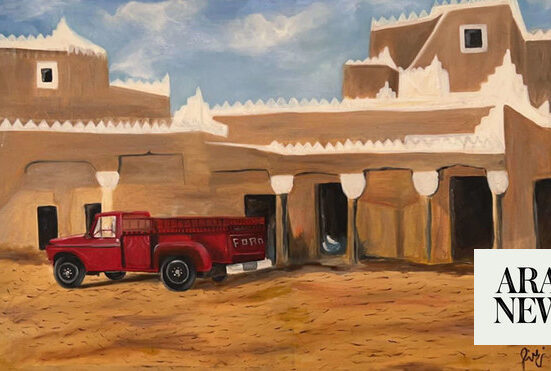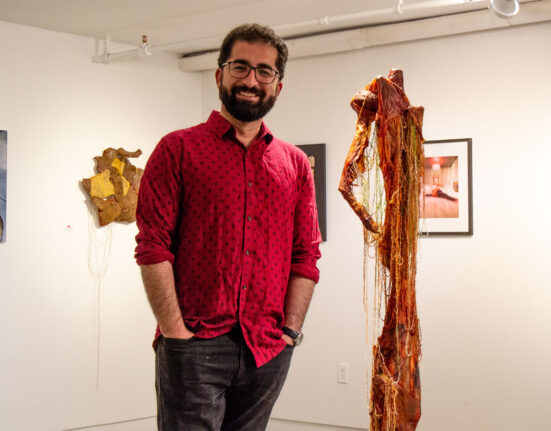As the temperatures drop in New York City and the art market bean counters scurry to Miami to sell in the warm sun, you might find December an ideal month to peruse the city’s galleries, which tend to fall into a quiet lull this time of year but are still brimming with new work of all kinds.
From Molly Crabapple’s charming chair portraits to Argentinian artist (and social media influencer) Marta Minujín’s fearless political works, we have a list of shows that will inspire, challenge, and excite to varying degrees.
And I wanted to mention that while many people in the New York area probably didn’t have an opportunity to visit Arghavan Khosravi’s excellent exhibition at the Rose Art Museum near Boston earlier this year, now you can see many of the pieces (particularly the standalone sculptures) in her current show at Rachel Uffner Gallery in the Lower East Side. Highly recommended. —Hrag Vartanian
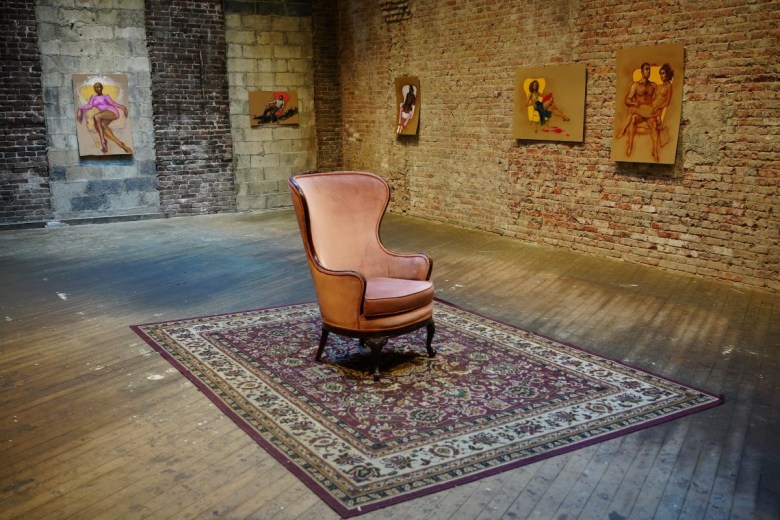
Molly Crabapple: The Chair Series
Our contemporary Toulouse-Lautrec, Molly Crabapple, loves to depict the marginalized and precarious, whether on the streets of New York, in Gitmo, in a war zone, or seated comfortably on her great-grandmother’s rose velveteen chair. In this pop-up show, Crabapple invited friends and strangers to take a seat in her inherited chair and be drawn. The results are a flurry of vibrant lines, well-articulated details, and snippets of stories that you can’t wait to hear more about. They’re sometimes sexy, often mysterious, and always striking. Like Toulouse-Lautrec, she often paints on boards, and if someone wants to pair these portraits with the works by the Post-Impressionist (like the ones at the Brooklyn Museum), I bet it would look 🔥.
I also want to mention that this show hits on two trends in the art scene now: painting your friends or those around you (Billy Sullivan is currently showing his over at Kaufmann Repetto Gallery), and cardboard, as Andrea Bowers at Andrew Kreps Gallery, Ghada Amer at Tina Kim Gallery, and likely many others are. Maybe it’s the precarity and protest culture in the air, but cardboard is in. —HV
Postmasters Gallery (postmastersart.com)
4 Bond Street, Noho, Manhattan
Through December 15
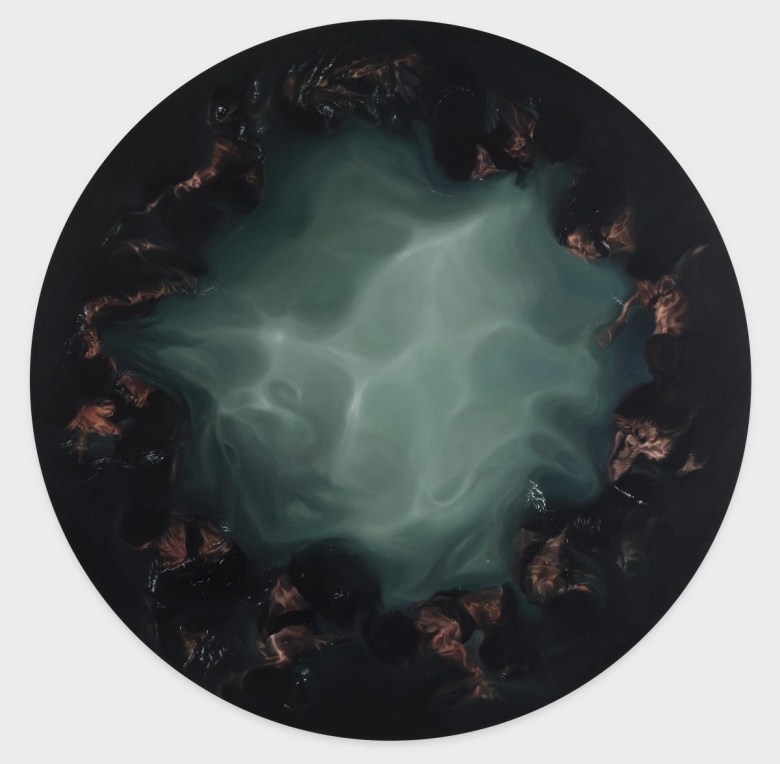
Calida Rawles: A Certain Oblivion
With the quiet reverence of religious icons, Calida Rawles’s expansive canvases portray Black women and girls floating in pools of water, their faces hovering just above the surface as their tulle gowns fan out majestically below it. Drawing symbolically from the theory of water memory, which stipulates that liquid retains the traces of substances diluted in it, Rawles captures moments of tension, grace, and resistance. In the tondo painting “Like Other Gods With Ancient Rage” (2023), the most stirring work in the show, submerged figures ripple and swirl around a bright center of light. —Valentina Di Liscia
Lehmann Maupin (lehmannmaupin.com)
501 West 24th Street, Chelsea, Manhattan
Through December 16
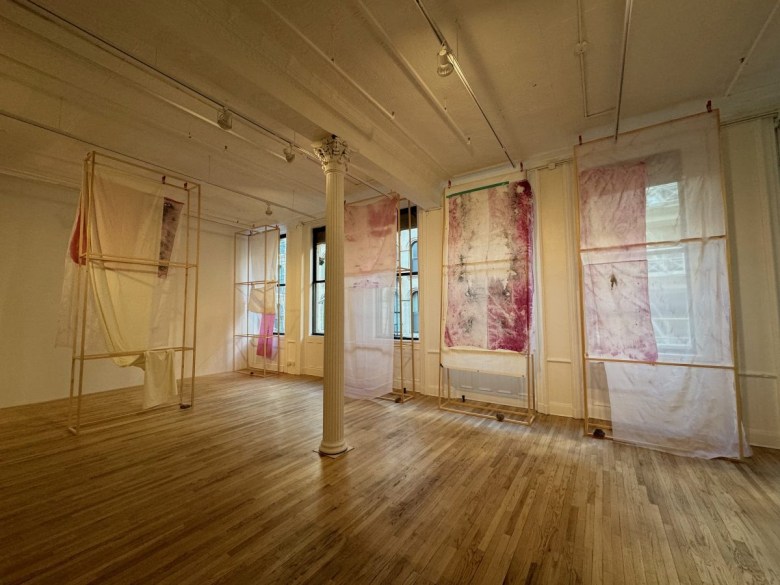
Duane Linklater: dressing
The artist, who is of Omaskêko Cree ancestry, loves his sparse minimalism that plays not only with artistic references and history but also with societal norms and expectations. A master of withholding in a culture that expects perpetual insight into minoritized and oppressed communities and how they’re feeling or thinking, Linklater seems to say, “F*** that.” He continues to forge a path towards combining the old and new, the familiar and unfamiliar, without falling into the same tropes and clichés that plague the field of contemporary art in North America, particularly connected to Indigenous perspectives. Who is “dressing” whom here? Are we being shielded from outside forces? Is his work a filter through which to see the world anew? The curtain-like works, covered with ghostly imagery that has been imprinted and then erased, remind me of Robert Rauschenberg’s Jammer series from the 1970s and the new possibilities that body of work presented to viewers. Like Rauschenberg, I think Linklater is helping lead us forward into something new and less precious so we can prepare for what comes ahead. —HV
Bortolami Gallery (bortolamigallery.com)
39 Walker Street, Tribeca, Manhattan
Through December 21
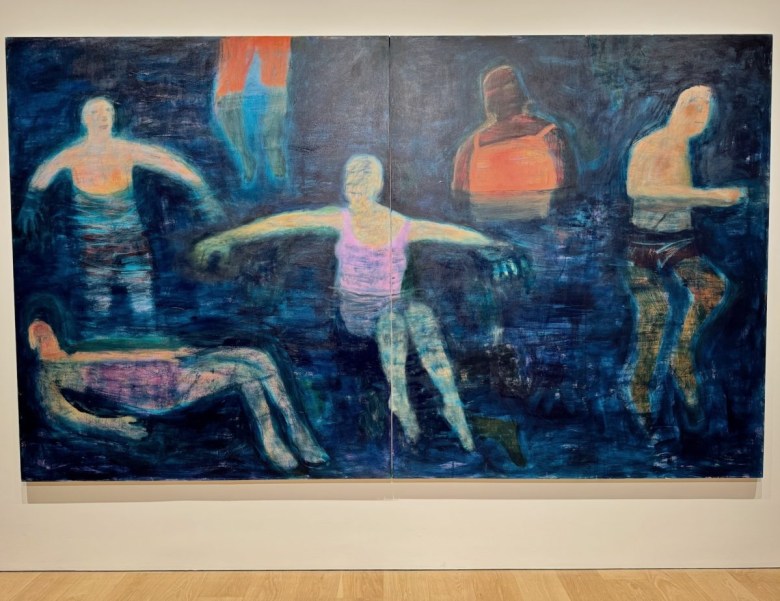
Katherine Bradford: Arms and the Sea
Figures are at the center of Katherine Bradford’s latest exhibition of new works at Canada Gallery, and she’s given her audience what we wanted: more bather paintings. Hurray! “In the Lake,” a large history-painting-sized canvas, is covered with at least six figures, though there are signs of others poking out into our perceptual register. They have a new weight and solidity that her past figures never quite had. In “Back Dive in Darkness,” a similar sense of gravity is also evoked in a way I don’t remember seeing in her work before, while the figures in “Midnight Waders” appear to express a type of emotional awareness that also feels novel in her art and “In Bed Together” depicts a glorious, cosmic moment of intimacy that anyone in love will feel viscerally. Something new is brewing here, and I suspect this is only the beginning. —HV
Canada (canadanewyork.com)
60 Lispenard Street, Tribeca, Manhattan
Through December 22
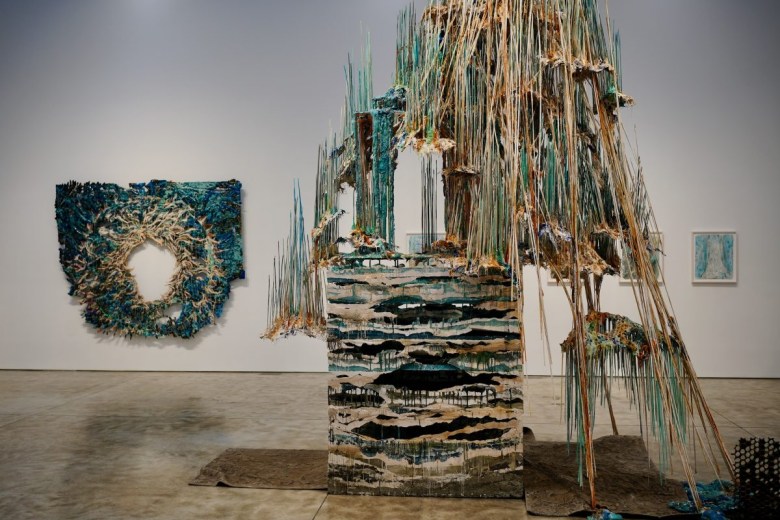
Diana Al-Hadid: Women, Bronze, and Dangerous Things
Diana Al-Hadid, who hails from Syria, takes freely from Western art much in the same way Europeans artists took freely from West Asian art. In the process, she creates tense objects that melt into their beauty in a way that evokes post-apocalyptic hope, or even the distortion of a digital rendering.
Some of her objects appear uneasy. Neither at home nor in transit, they exist at the threshold of something in the midst of becoming something else, never static, always in flux. At times, it looks like Al-Hadid has gathered a handful of pieces that she has bound together into a visual bouquet that is far greater than (and often unrecognizable from) its parts. “Blue Medusa” (2023) removes the mythological Gorgon’s face to focus on her hair of snakes, which here resembles a radiating sun. It is often through selective omissions, this exhibition reminds us, that Al-Hadid says the most. —HV
Kasmin Gallery (kasmingallery.com)
509 West 27th Street and Kasmin Sculpture Garden on the High Line at 27th Street
Through December 22
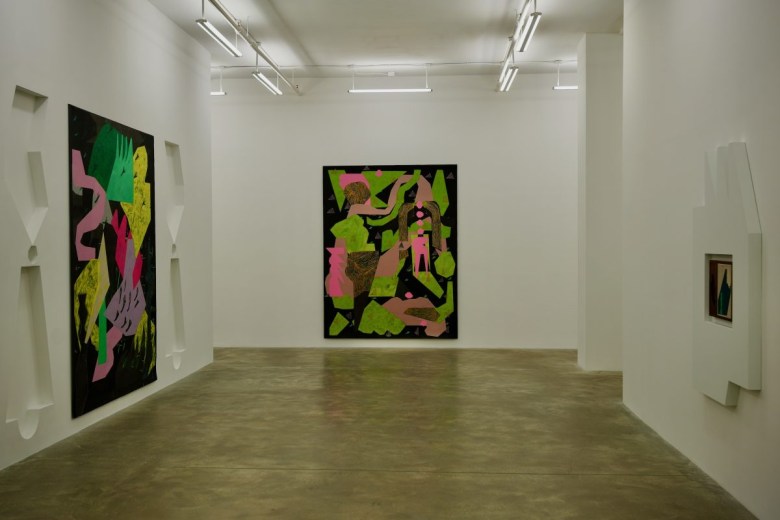
Caroline Kent: This space for correspondence
This is an elegant show from an artist with a knack for sensitively placing work in relation to the viewer and the gallery space. Caroline Kent’s current exhibition includes not only unstretched canvases that hang on the wall, much like a type of tapestry, but also curious white geometric cutouts that scoop out sections of the wall or sit atop it like forms glued to a surface. The largest sculptural forms on the wall are called columns, and they expand what she’s been doing with shapes and color for years. Even if the rhythm between the wall works and canvases doesn’t feel fully hashed out, particularly in the brightly lit and light-colored galleries that make the largely dark paintings look more stark, the final effect is intriguing and contributes to what feels like her continuing journey to create new languages of abstraction for the 21st century. —HV
Casey Kaplan Gallery (caseykaplangallery.com)
121 West 27th Street, Chelsea, Manhattan
Through December 22

Sonya Kelliher-Combs: Secrets
Artist Sonya Kelliber-Combs is deeply interested in materiality, a topic that is informed by her Iñupiaq and Athabascan heritages and the subsistence hunting she learned from her family growing up. She frequently revisits and recreates the same forms that speak to the notion of a collective and what binds us to a larger whole.
Serial works like Idiot Strings, which are made from materials like goat and sheep hide, highlight the sexual violence against Indigenous children in Alaska, while others in the series are more direct responses to familial suicides. The forms hang at a child’s height and the shadows of the forms (or their absence) are just as important as the work itself, illustrating the impact of an object (or person) on its environment and surroundings.
In her Small Secrets series, a version of which is also shown here, the tusk forms on Inupiaq parkas become a mysterious shape that she reproduces again and again. That repetition and cryptic lexicon appear to be a key part of Kelliher-Combs’s art, echoing the traumas of colonialism that she wakes up to daily, while also giving us something with a meaning just beyond our grasp. —HV
Andrew Kreps Gallery (andrewkreps.com)
394 Broadway, Tribeca, Manhattan
Through December 22
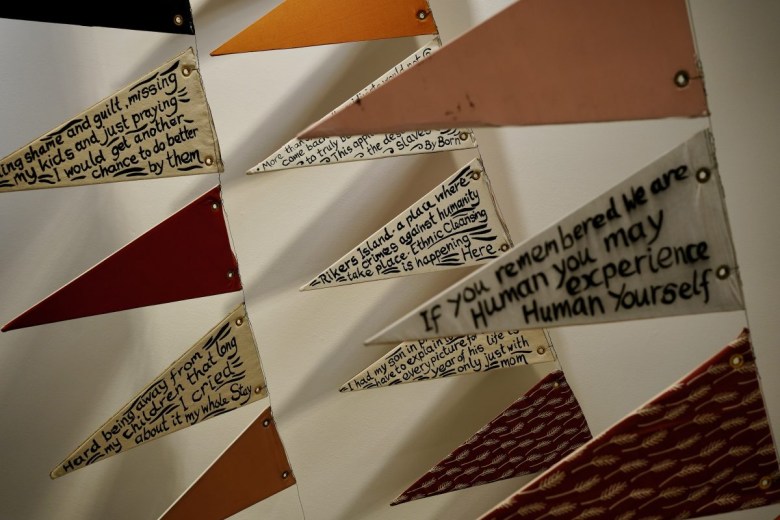
B-side: (Broken) Memory and Remix and Jenny Polak: Homeward Bound
These two solid shows are worth a trip to BRIC, as they explore racializing and healing in various ways using pop culture, domesticity, and material exploration. At the center of B-side is Raque Ford’s impressive dance floor to evoke community and the mediums of change, while hovering close by on a wall is David Ellis’s “Red Springs,” “Wake,” and “Blue Springs” (all 2018) that play with minimalist sculpture and album covers to draw parallels between societal frameworks and collective consciousness.
But don’t miss Jenny Polak’s quietly powerful one-room show nearby, where she fashions objects that base themselves on domestic items transformed with a new consciousness around incarceration and the violence of borders. In one work, what looks like the West Bank barrier is crafted onto tiles you might see in a kitchen counter backsplash, while in another, pennants are covered with the words of those who speak to us from behind bars. —HV
BRIC (bricartsmedia.org/exhibition/b-side-broken-memory-and-remix/ and bricartsmedia.org/exhibition/jenny-polak-homeward-bound/)
647 Fulton Street, Fort Greene, Brooklyn
Through January 21, 2024

Cosmic Shelter: Hélio Oiticica and Neville D’Almeida’s Private Cosmococas
Though artist Hélio Oiticica and filmmaker Neville D’Almeida were both Brazilian, they met for the first time in 1970s New York. Oiticica, who self-exiled in the city amid Brazil’s military dictatorship, pushed his practice in a more experimental and transgressive direction when he collaborated with D’Almeida on Bloco-Experiências in Cosmococa–Programa in Progress (1973), a series of “supra-sensorial” experiential environments. On view at the Leubsdorf Gallery are two selections from the strange and thrilling Cosmococas — a portmanteau of “cocaine” and “cosmos” — featuring uncanny projected slideshows of pop-culture icons, mambo music, snippets of works by Yoko Ono, and buckets of water that visitors can dip their toes in. Art just hit different in the ’70s, am I right? —VD
Bertha and Karl Leubsdorf Gallery at Hunter College Art Galleries (hunter.cuny.edu)
132 East 68th Street, Upper East Side, Manhattan
Through March 30, 2024
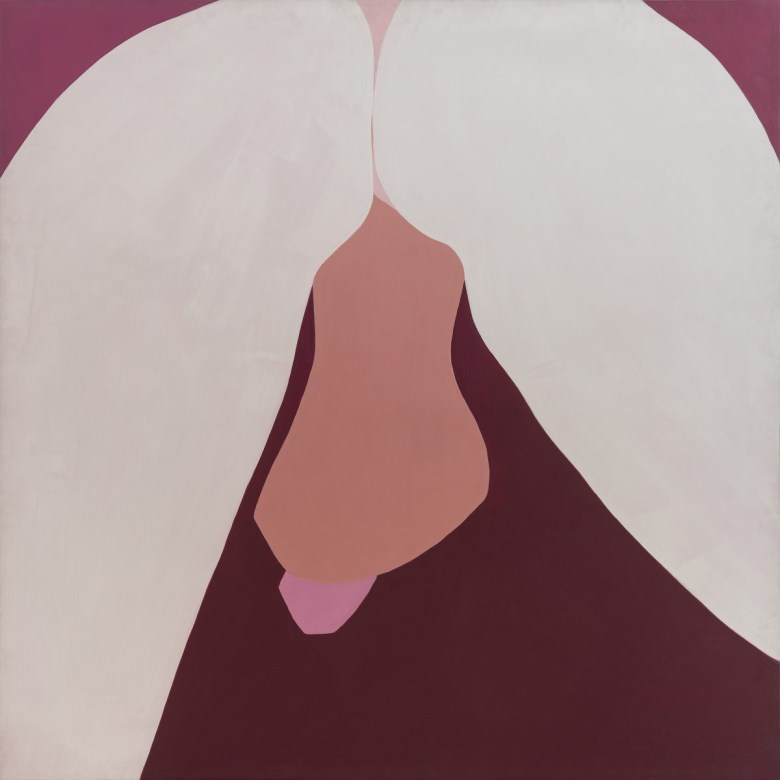
Marta Minujín: Arte! Arte! Arte!
Step into the marvelous world of Marta Minujín, where you’ll find sculptures made of mattresses, a Parthenon built out of books, and ears of corn that represent Argentina’s external debt. The Buenos Aires-born artist burst onto the Pop and feminist art scenes of the 1960s with irreverent works defined by participation and ephemerality, and this exhibition is her first survey in the United States. The show covers six decades of her career, with highlights including video documentation of early performances and “happenings”; her explicit Frozen Sex (1973–1975) paintings, which were censored at the time; and recent works inspired by psychedelics, among many more. One could say we’ve always needed Minujín’s fearless, irreverent vision; now, as Argentina grapples with the rise of an ultraconservative leader who threatens hard-earned rights and denies past atrocities, we may need it more than ever. —VD
The Jewish Museum (thejewishmuseum.org)
1109 Fifth Avenue, Upper East Side, Manhattan
Through March 31, 2024

